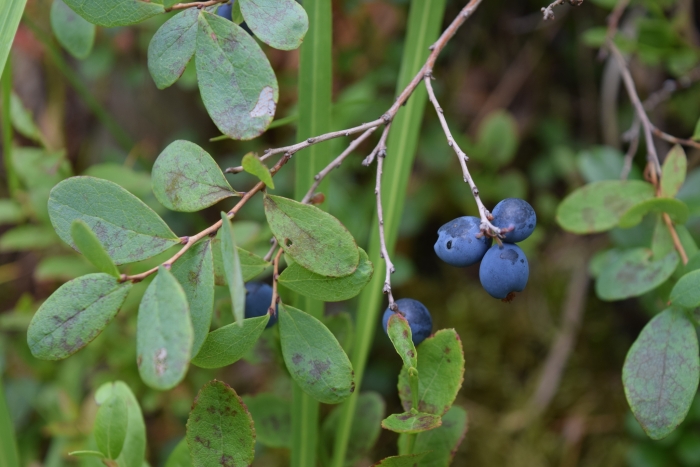Bog Blueberry
(Vaccinium uliginosum)
Bog Blueberry (Vaccinium uliginosum)
/
/

Natalya Ivanova
CC BY 4.0























































Estimated Native Range
Summary
The Bog Blueberry is valued for its edible fruit and is often used in fruit gardens, naturalistic plantings, and as ground cover in suitable climates. It thrives in full sun to part shade and requires acidic, well-drained soil with consistent moisture. While it is relatively low-maintenance, it can suffer from diseases such as fungal leaf spots and root rot if conditions are too wet. In some regions, it can be difficult to establish due to its specific soil and moisture requirements. It is not known for being invasive and is generally considered a beneficial addition to gardens for its fruit and as a food source for wildlife.CC BY-SA 4.0
Plant Description
- Plant Type: Shrub
- Height: 0.7-1.3 feet
- Width: 0.3-1 feet
- Growth Rate: Moderate
- Flower Color: Purple
- Flowering Season: Summer, Fall
- Leaf Retention: Deciduous
Growth Requirements
- Sun: Full Sun, Part Shade
- Water: Medium
- Drainage: Medium
Common Uses
Bee Garden, Bird Garden, Butterfly Garden, Edible*Disclaimer: Easyscape's listed plant edibility is for informational use. Always verify the safety and proper identification of any plant before consumption., Fire Resistant, Hummingbird Garden, Low Maintenance, Water Garden
Natural Habitat
Moist acidic soils of tundra, alpine areas, and boreal forests
Other Names
Common Names: Western Blueberry , Northern Bilberry , Bog Bilberry , Mose-Bølle , Sumpf-Heidelbeere , Trunkelbeere , Moosbeere , Rauschbeere , Airelle De Marécages , Myrtille Des Marais
Scientific Names: Vaccinium uliginosum , Vaccinium uliginosum subsp. microphyllum , Vaccinium uliginosum var. nana , Vaccinium uliginosum var. langeanum , Vaccinium uliginosum var. sednense , Myrtillus uliginosa var. microphylla , Vaccinium microphyllum , Vaccinium microphyllum f. langeanum , Vaccinium uliginosum f. langeanum , Vaccinium uliginosum subsp. alpinum
GBIF Accepted Name: Vaccinium uliginosum L.